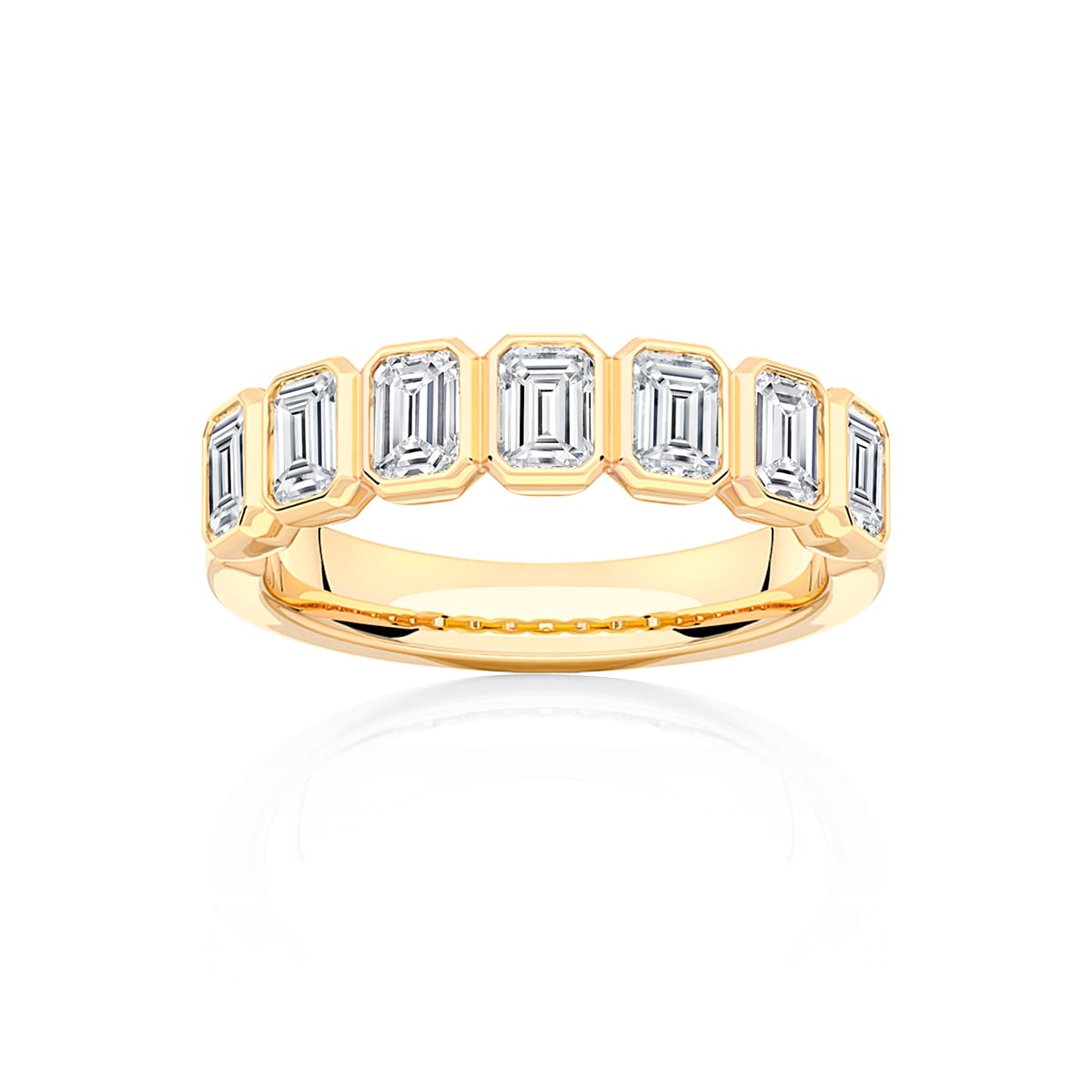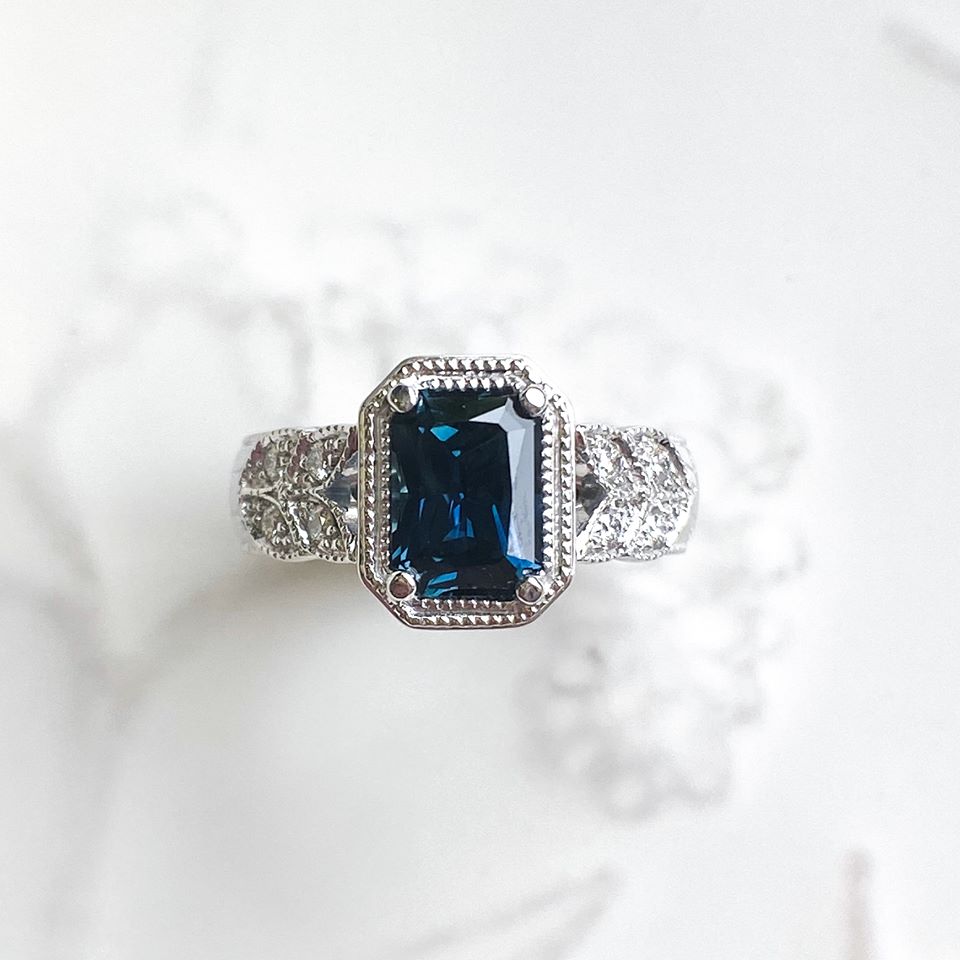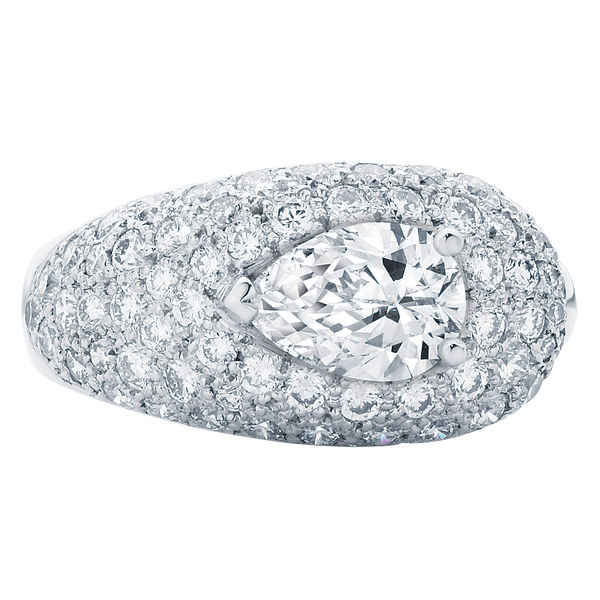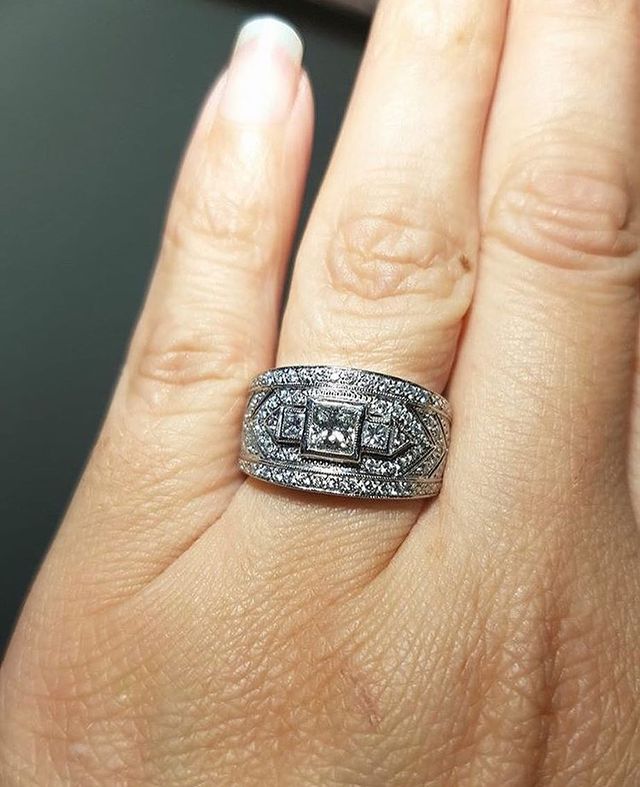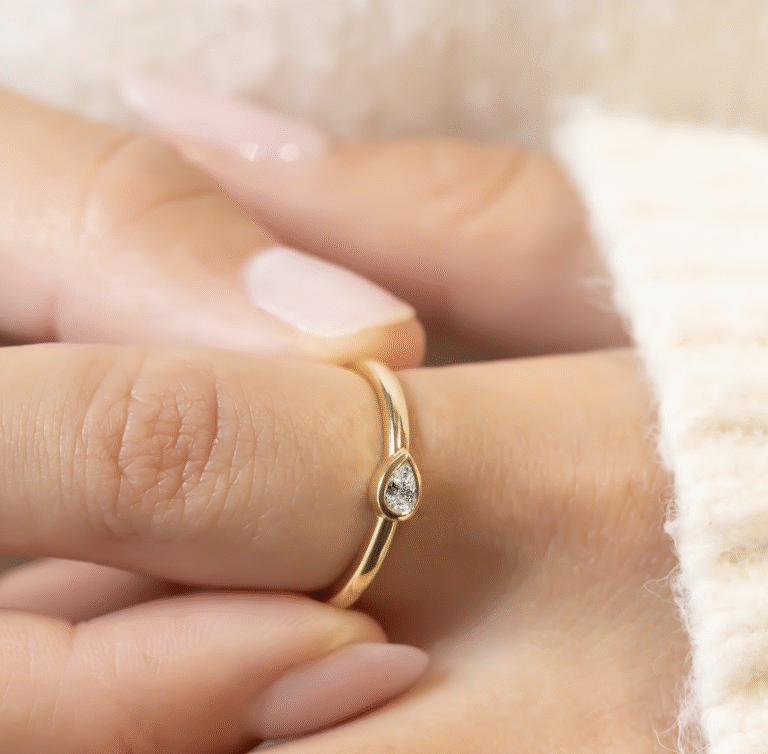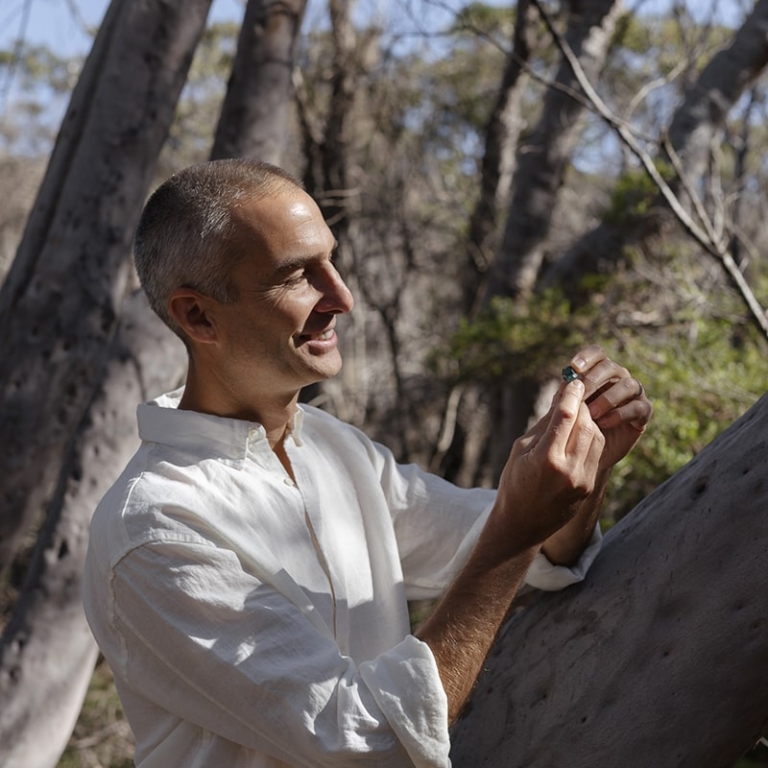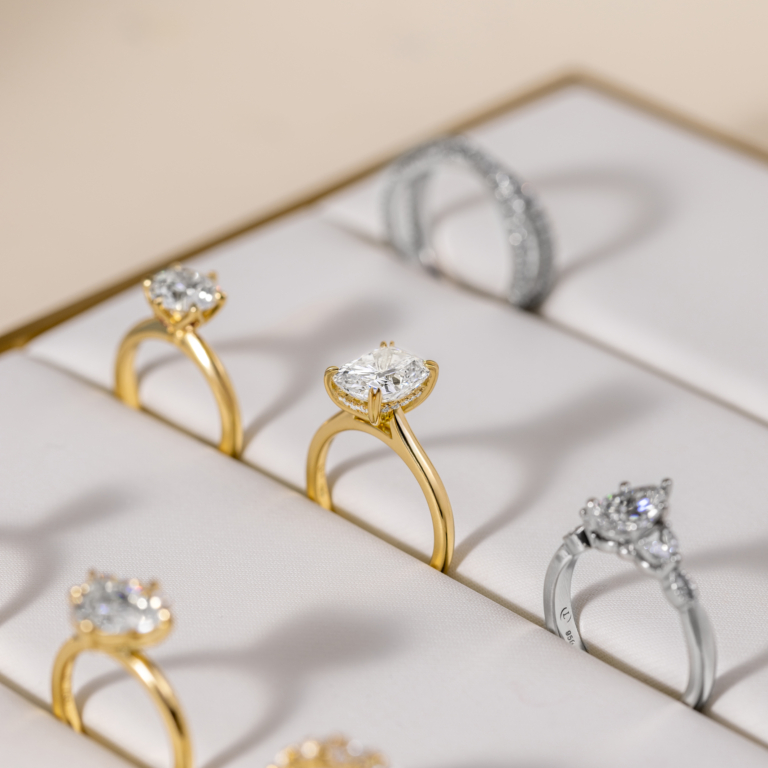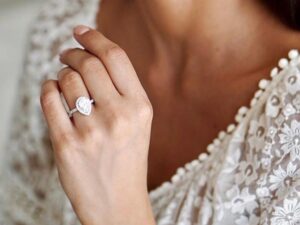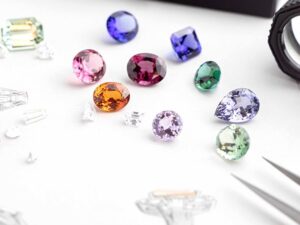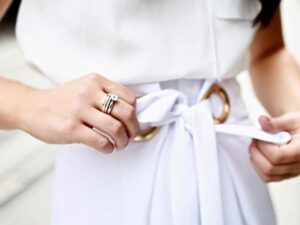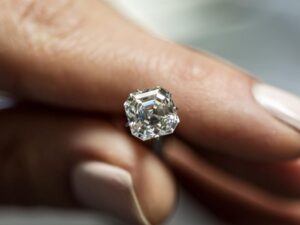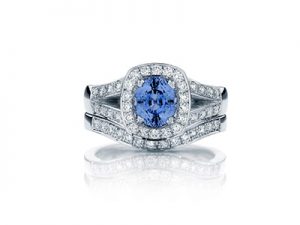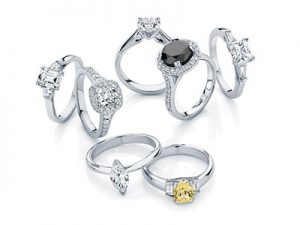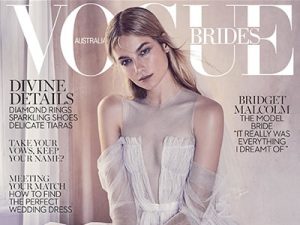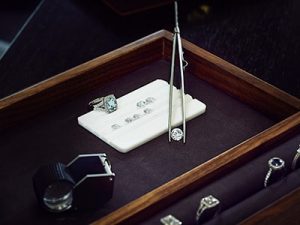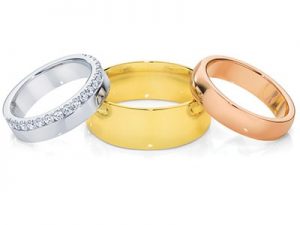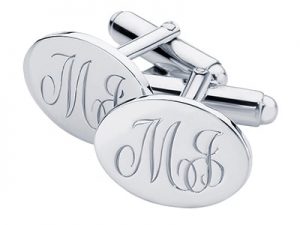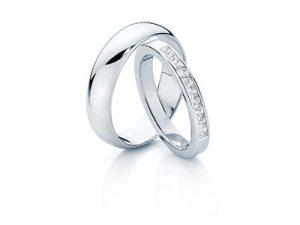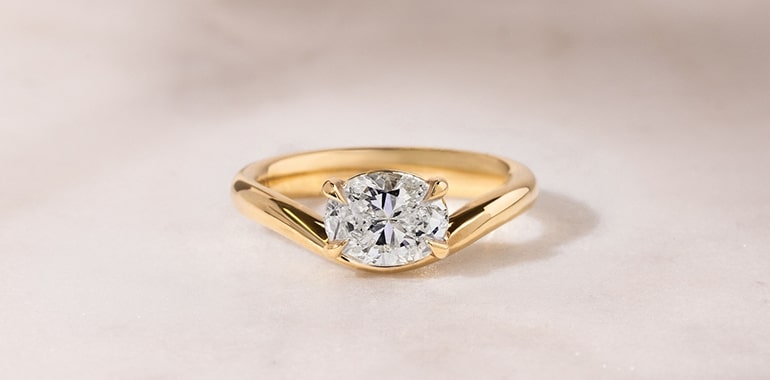Chunky and Wide Band Engagement Rings
by Kate Reid
January 10, 2025 / Engagement Rings
Why Would I Get a Chunky Or Wide Band Engagement Ring?
A wider band can often lead to a statement ring, a unique engagement ring that gives so much real estate for sparkle and impact. Because wider rings tend to fully or mostly encompass a centre stone and its design, it often makes ring stacking easier because the design doesn’t overflow beyond the band, or doesn’t overflow much. Rings stacked on top of it, then, probably don’t need to be custom designed to fit. Plus, I’m sure you’ve seen jewellery trends with heavier, thicker pieces for necklaces, bracelets and the like. Engagement rings are starting to follow suit.
There are also practical reasons for wanting a wider band. Namely, diamonds and gemstones in heavier bands can often be set more securely than in thinner bands. Many times, wearing a broader band is more comfortable too.
Gem Settings For Wide Band Rings
As we mentioned, there are practical reasons for wanting a chunkier engagement ring, as you’re able to use some of the most secure gemstone settings: bezel, flush mount, and channel. Plus, if you do choose a claw setting, a wider band allows for more metal in the prongs to keep stones secure, and more metal around the stone to help manage the weight of a higher carat stone.
A bezel or semi-bezel either fully or partially wraps around the stone, and because of the way the metal is set around it is slightly lifted from the band. Flush settings are often known as “hammer settings.” This is because jewellers carve a hole in the gold or platinum to allow the diamond to sit flat. Finally, they gently forge the edges of the metal until it completely surrounds the diamond and then smooth it out. Channel settings are where stones on the shank of the ring are set along a track between the walls of your band. The stones are nestled against one another and not separated by prongs, beads, or bezels.
East West Setting
While east west settings (longways across your finger rather than up and down) can absolutely look lovely with a thinner band in a claw setting, we have a soft spot for this setting when it’s done with a chunky band.
When you have an elongated shape diamond or gemstone (think oval, pear engagement rings, emerald engagement rings or asscher engagement rings), an east-west setting completely changes the personality of the design, adding a fresh take. Because of the different amount of real estate the east-west setting takes up on your finger, this type of setting can actually make your stone look bigger as well.
Something to consider if you do go for the east-west setting: watch out for the bow-tie effect. If a stone has a bow-tie, an east-west setting can emphasise it. Most fancy cut diamonds can get bow ties, like marquise engagement rings and oval engagement rings. The best way to avoid them is to go for higher grade cuts, and actually see the stones in person!
Gem or Diamond Cuts For Broader Rings
The sky’s the limit with chunkier rings, and honestly, it gives you the space in your design to play around with multiple stone shapes, lots of pave or accent stones, and so much more. So fancy cut, round, or diamond and gemstone mixes like emerald engagement rings, ruby engagement rings, sapphire engagement rings and morganite are all options.
Carat Weight For Wide Engagement Rings
Just because you have a larger, wider band, doesn’t mean you need a higher carat stone to go with it (though if you want to use that as a point in your conversation, we won’t argue with you). In fact, what a lot of folks do with wider bands is use the opportunity to use multiple smaller stones in a cluster design, or a toi et moi, or create a design with a lot of pavé. You have a lot more real estate, so why not create sparkle and visual interest from a lot of different angles?
Some do feel a stone up to 2 carats with a wider band absolutely looks smaller, but, honestly, it depends on how it’s set and the overall design, as well as your own aesthetic. While some feel like a bezel set stone looks larger because the bezel acts like a mini-halo, others think a bezel set diamond or gemstone looks smaller because the bezel covers the edge of the stone. It’s all about what you see and what you like.
Metal Considerations With Wide Bands
There are no real differences in the metal considerations with a wider band ring than there are with a thinner band ring. As per usual, for any other rings you’d regularly wear on the same finger, you probably want to use the same metal (either gold or platinum if you’re working with one of our jewellers at Larsen). The other main consideration is that because you’re creating a wider band, and potentially using more metal on settings as well, you’ll need more raw material. The increased weight means you’ll be paying a bit more for the extra gold or platinum your jeweller is using in your engagement or wedding ring design.
Signet Engagement Rings
We’re seeing signets come back into popularity as well, perhaps as a part of wider bands overall. Signet rings can be just as versatile as an engagement ring and can absolutely be used as an engagement ring — whether as a non-diamond alternative, or if you want to bling out your signet, we’re all for that.
Chunky engagement rings are here to stay, and have a lot of room for your personality and style to shine! What kind of wide band engagement ring would you design?
